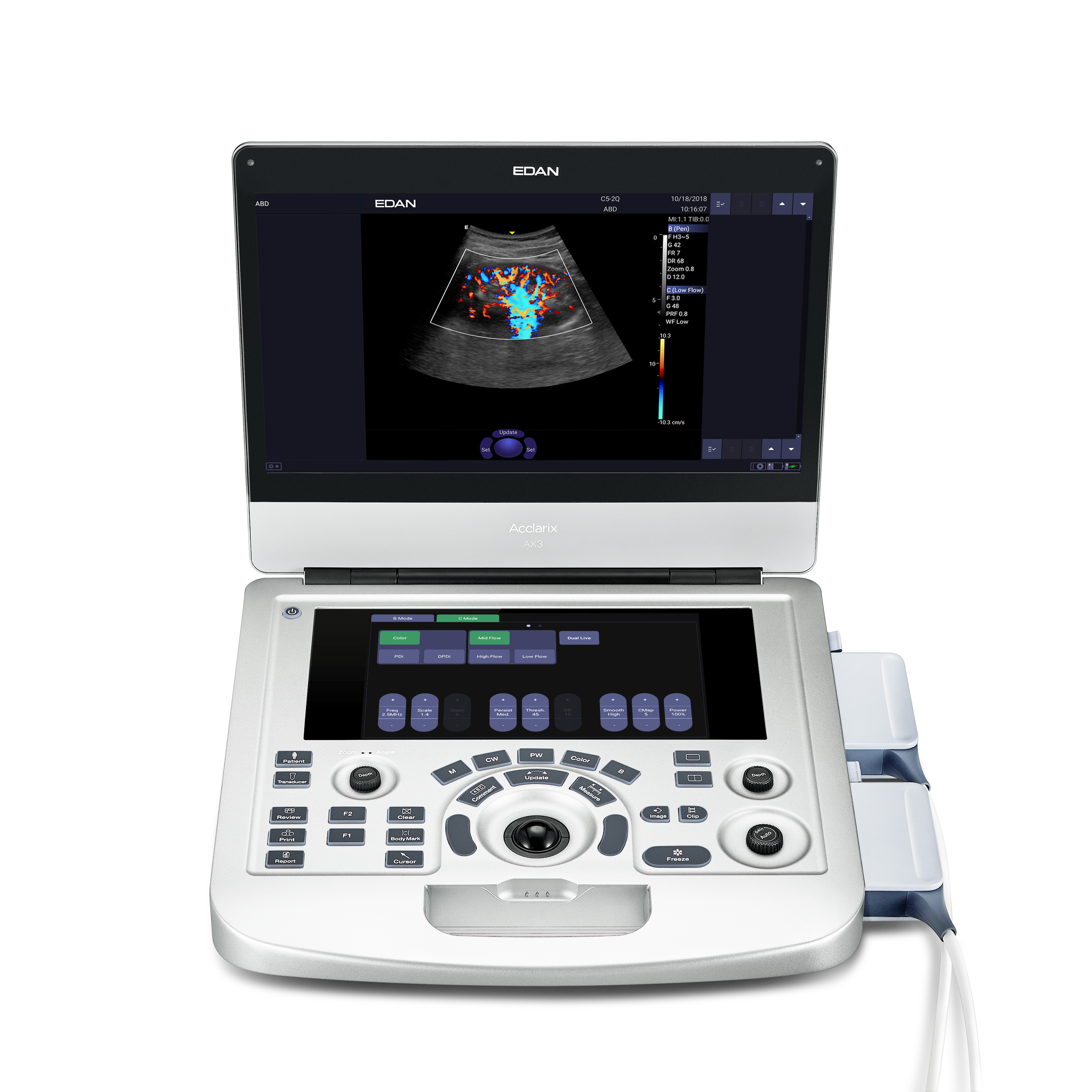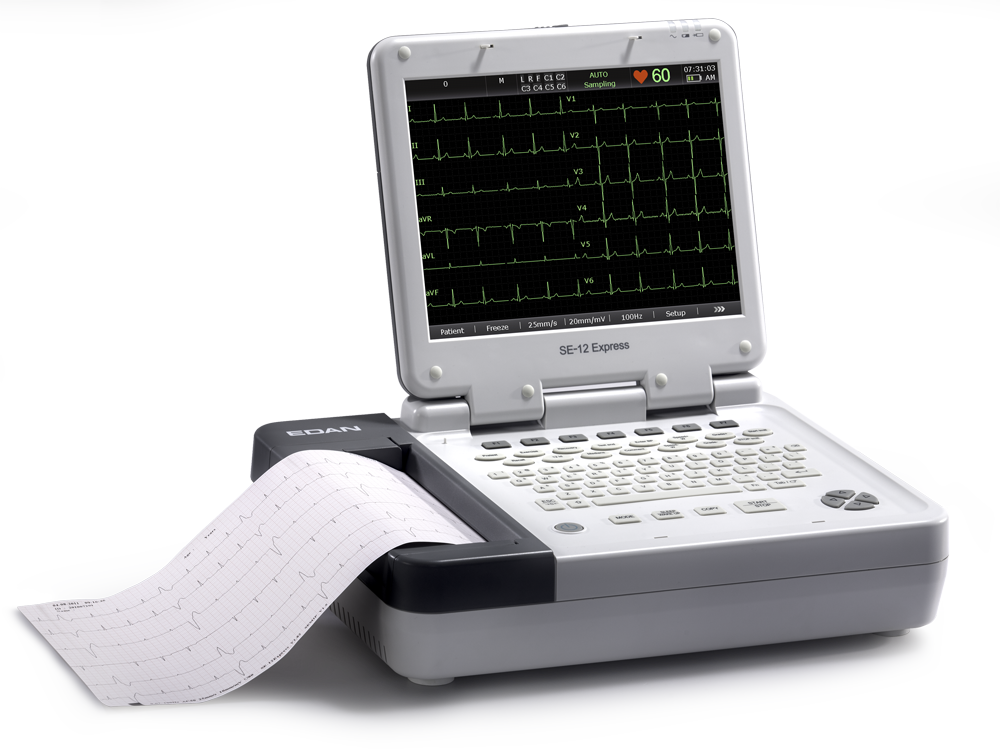Ultrasound & Transducer Selection Guide
Choosing the Right Ultrasound Equipment for Your Medical Practice:
Selecting the right ultrasound equipment for your medical practice is crucial for providing accurate diagnostics and high-quality patient care. With numerous options available, it’s essential to understand your practice’s specific needs and the capabilities required for various procedures. Here’s a comprehensive guide to help you make an informed decision.
Assess Your Clinical Needs
Before diving into the specifics of ultrasound machines, start by assessing your clinical requirements. Consider the following:
- Types of Procedures: Identify the types of exams you will perform most frequently. Common procedures include obstetric and gynecological exams, cardiac imaging, vascular studies, and general abdominal scans.
- Patient Volume: Estimate the number of patients you will see daily. This will help determine whether you need a high-capacity machine or a more portable option.
- Budget Constraints: Establish a budget that balances quality and affordability. Remember that investing in a reliable machine can save costs in the long run.
Understanding Ultrasound Technologies
Ultrasound machines come with various technologies, each suited for different medical specialties:
- 2D Ultrasound: The most common type, used for general imaging and basic diagnostics.
- 3D/4D Ultrasound: Provides detailed images and real-time motion, ideal for obstetric imaging.
- Doppler Ultrasound: Measures blood flow and is essential for vascular studies and cardiac imaging.
- Advanced Imaging Modalities: Includes elastography and contrast-enhanced ultrasound, useful for specialized diagnostics.
Key Features to Consider
When choosing an ultrasound machine, consider the following features:
- Image Quality: High-resolution images are crucial for accurate diagnostics. Look for machines with advanced imaging capabilities and high-frequency transducers.
- Portability: Depending on your practice, you may need a portable machine for bedside exams or a more robust, stationary unit for a dedicated imaging room.
- Ease of Use: User-friendly interfaces and customizable settings can improve workflow efficiency and reduce the learning curve for new users.
- Connectivity: Ensure the machine can integrate with your existing electronic medical records (EMR) system for seamless data transfer and storage.
- Service and Support: Choose a manufacturer that offers reliable customer support and maintenance services to minimize downtime.
Matching Equipment to Procedures
Different procedures require specific capabilities from your ultrasound equipment:
- Obstetric and Gynecological Exams: Machines should have 3D/4D imaging capabilities and specialized transducers for detailed fetal and pelvic imaging.
- Cardiac Imaging: Look for machines with Doppler capabilities and high-frequency transducers to capture detailed images of the heart and blood flow.
- Vascular Studies: Doppler ultrasound is essential for assessing blood flow and detecting blockages or abnormalities in blood vessels.
- General Imaging: A versatile machine with 2D imaging and a range of transducers can handle various exams, from abdominal scans to musculoskeletal imaging.
- Skilled Nursing and Rehabilitation Centers: These facilities often require portable ultrasound machines for bedside exams and general imaging. Look for machines with easy mobility and user-friendly interfaces.
- Pain Management Practices: Ultrasound-guided injections and nerve blocks are common in pain management. Machines with high-resolution imaging and specialized transducers for musculoskeletal and nerve imaging are essential.
Choosing the Right Transducer
Transducers, also known as probes, are a critical component of ultrasound equipment. The right transducer can significantly impact the quality of your imaging and the accuracy of your diagnostics. Here’s how to choose the right transducer for different procedures:
- Linear Transducers: Ideal for vascular studies, musculoskeletal imaging, and small parts like thyroid and breast exams. They offer high-frequency imaging, providing excellent resolution for superficial structures.
- Curved (Convex) Transducers: Best suited for abdominal and obstetric imaging. They provide a wider field of view and deeper penetration, making them ideal for visualizing larger organs and fetal structures.
- Phased Array Transducers: Primarily used for cardiac imaging. They offer a small footprint and can capture detailed images of the heart, even through the ribs.
- Endocavitary Transducers: Designed for internal exams, such as transvaginal or transrectal imaging. They provide high-resolution images of pelvic organs and the prostate.
- Microconvex Transducers: Useful for pediatric and neonatal imaging. They offer a smaller footprint and can provide detailed images of small patients.
Leading Brands and Models
Several manufacturers are known for their high-quality ultrasound equipment:
- Edan Diagnostics: Known for innovative and reliable ultrasound systems, Edan offers a range of products suitable for various medical specialties.
- GE Healthcare: Renowned for innovative technology and a wide range of systems for different medical disciplines.
- Philips: Offers state-of-the-art features and exceptional image quality, making it a trusted choice for many healthcare professionals.
- Siemens Healthineers: Known for clinical excellence and a diverse array of ultrasound systems.
- Sonosite: A well established and popular choice for ultrasound machines. Versatile with a variety of options for various applications.
- Mindray: Provides reliable and affordable solutions, ideal for small to medium-sized practices.
- Canon Medical (formerly Toshiba): Offers advanced imaging solutions with exceptional image clarity and ergonomic design.
Conclusion
Choosing the right ultrasound equipment for your medical practice involves careful consideration of your clinical needs, budget, and the specific capabilities required for various procedures. By understanding the available technologies and key features, you can select a machine that enhances patient care and diagnostic accuracy. Investing in the right equipment will ultimately benefit your practice and improve patient outcomes.
For more specific information and personalized assistance, the experts at PBC Medical Solutions can help physicians, directors of nursing, and material managers navigate the complexities of selecting the best ultrasound equipment for their unique needs.




